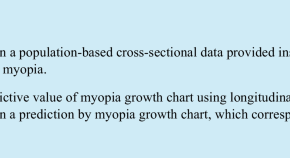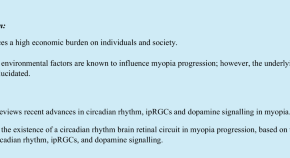Distribution and associations of anterior lens zonules lengths in patients with cataract
Authors (first, second and last of 6)

Collection
In recent years, the rapid increase in myopia has become a worldwide problem. Holden et al. estimated that by 2050, half of the world's population will be myopic and 10% will have high myopia. Environmental factors are also important in the progression of myopia in children, and risk factors include excessive near work, especially with smartphones, and reduced outdoor activity. Since most myopia develops and progresses during childhood, it is important and critical whether myopia can be prevented and its progression controlled during this period.
In recent years, treatment to control myopia progression in children has advanced dramatically. In addition to low-concentration atropine eye drops and orthokeratology, there are specially designed glasses such as DIMS lenses, and the recent popular red light therapy. Among these, the red light therapy has attracted much attention due to its high efficacy. Pathologic myopia is the most severe form of myopia. Pathologic myopia deforms the eyeball and damages the retina and optic nerve, causing lesions that can lead to blindness. Recent advances in diagnostic imaging, such as 3D MRI and ultra-wide-field OCT, are helping to elucidate the age at which and how ocular deformities, such as posterior staphyloma, occur. Early treatment to control ocular deformities is desirable. This topical collection will feature the latest findings in all areas of myopia, from the control of myopia progression in children to the prevention of blindness due to pathological myopia.








